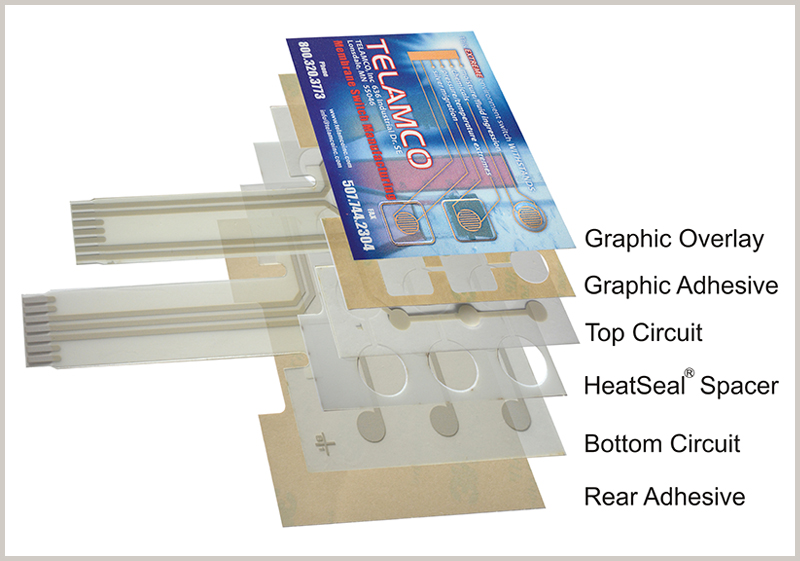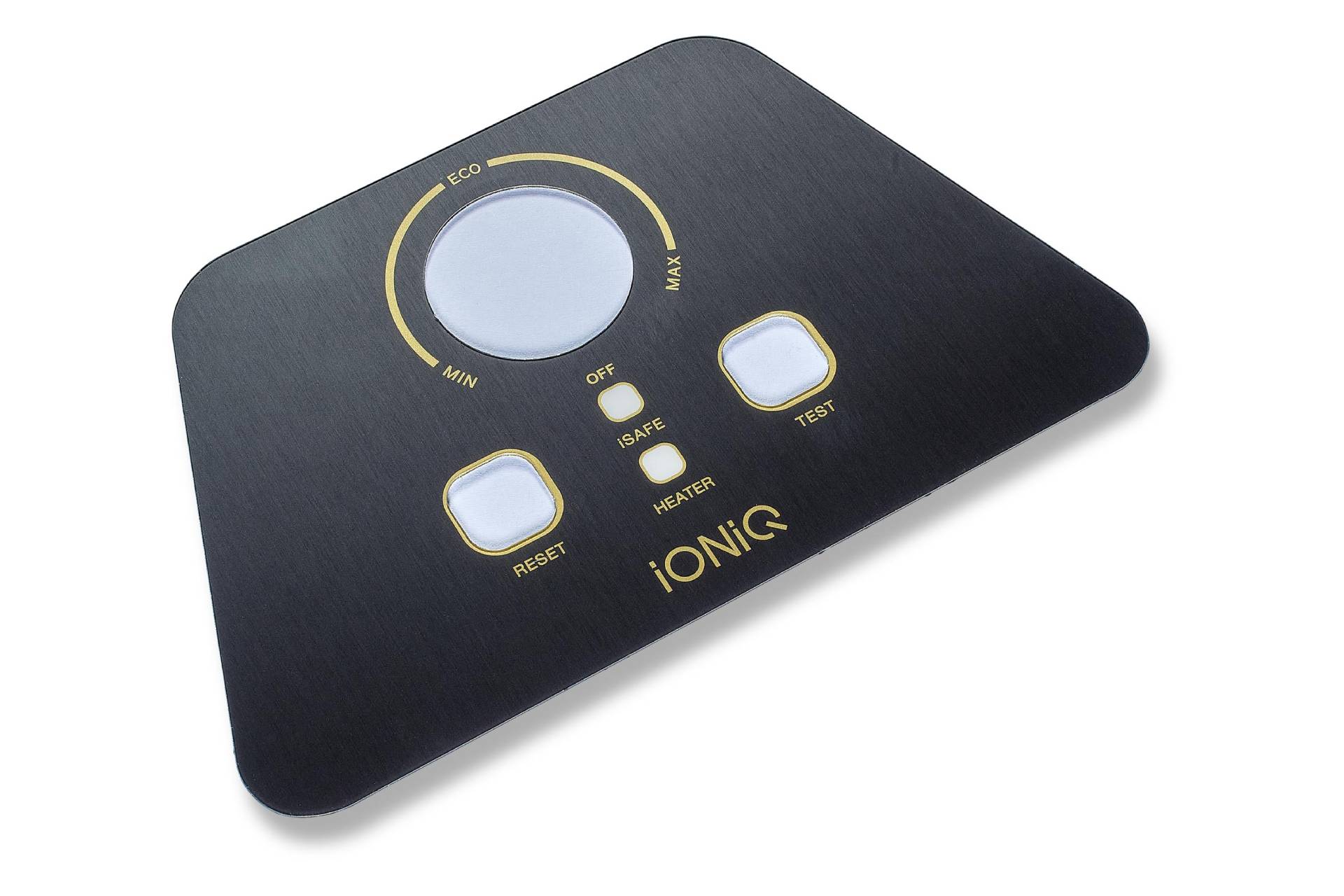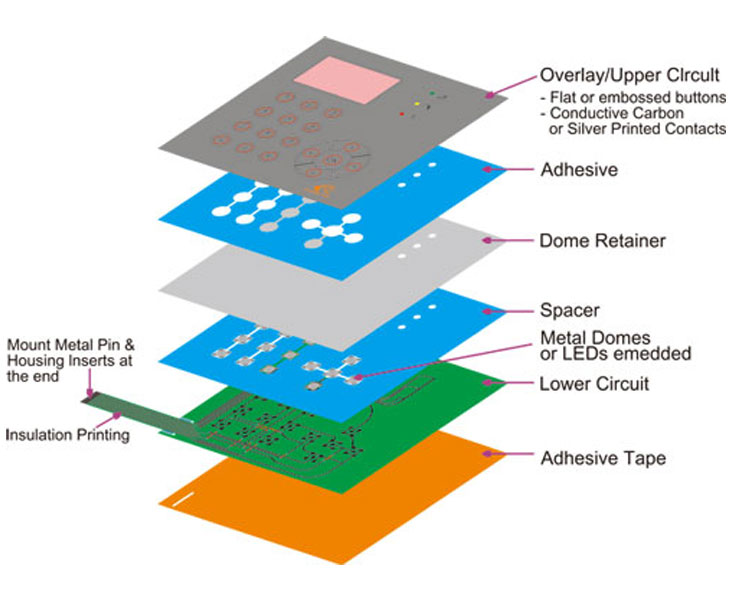Membrane Switch Manufacturer Delivering Fully Custom Solutions
Understanding the Importance of Membrane Switch in Modern Electronic Devices and Their Applications
Membrane switches serve as an essential element in modern electronics, offering a reliable interface for user interaction. Their lightweight and customizable nature makes them suitable for a series of applications across varied sectors. Understanding their key parts and advantages can give understandings right into their expanding importance. As technology proceeds to advancement, the evolution of Membrane changes elevates questions concerning their future applications and design innovations. What exists ahead in this vibrant field?

What Are Membrane Buttons?
Membrane switches are essential parts in modern electronic devices, working as individual interfaces that assist in interaction between tools and customers. These switches contain a number of layers, consisting of a graphic overlay, an adhesive layer, and a circuit layer, all of which collaborate to produce a long lasting and useful user interface. The style permits a flat, low-profile solution that can be personalized regarding dimension, form, and visual appearance, making them ideal for various applications, from customer electronics to medical gadgets. The responsive responses supplied by Membrane switches over boosts individual experience, while their resistance to dust and wetness makes them excellent for testing environments. Membrane buttons can include features such as backlighting and published graphics, additionally expanding their functionality. Their adaptability and toughness make them a preferred choice in markets where integrity and ease of use are extremely important, ultimately adding to the seamless operation of modern-day digital tools.
Key Parts of Membrane Switches
While different parts contribute to the capability of a membrane layer button, 3 primary layers play significant duties in its design and procedure. The top layer, commonly made from a sturdy polymer, acts as the interface for individual interaction, commonly including published graphics and icons. Beneath this is the spacer layer, which keeps the essential distance between the leading layer and the circuit layer. This spacer layer assurances that the button triggers just when pushed, avoiding unintended inputs. Lastly, the circuit layer includes conductive traces that finish the electric circuit when the top layer is depressed. These traces can be made from different products, including copper or silver. Together, these components develop a trusted and durable tool that is compact and functional, appropriate for a vast array of digital applications, from family devices to medical devices. Recognizing these essential parts is essential for valuing the general performance of Membrane buttons.
Advantages of Making Use Of Membrane Switches

Membrane Switch Manufacturing Refine
Recognizing the Membrane switch manufacturing procedure reveals the detailed steps associated with producing these important elements. The process normally starts with the design phase, where specs and formats are created using specialized software application. Following this, the graphic overlay is printed on a flexible substrate, typically making use of high-resolution printing methods to guarantee quality and precision.Next, the glue layers are used, which offer to bond the numerous parts together. The circuit layers, made from conductive inks or products, are after that published onto a different substrate. These layers are carefully aligned and laminated flooring to create a practical switch.After setting up, the switches undertake examining to verify functionality and toughness. Quality control steps are implemented throughout the process to identify and correct any kind of issues. The completed Membrane buttons are packaged and prepared for distribution, all set to fulfill the needs of modern electronic applications.
Applications of Membrane Switches Over in Different Industries
Membrane switches are significantly used throughout various markets, particularly in clinical devices and consumer electronic devices. In the clinical field, they give trusted control user interfaces for gadgets that call for specific procedure. In consumer electronic devices, these buttons improve individual communication by using smooth and receptive interfaces. Receptive Medical Tools Control
Numerous modern-day clinical devices utilize Membrane switches for structured operation and enhanced individual interaction. These switches provide a trustworthy, sturdy interface for a variety of applications, including analysis tools, person surveillance systems, and surgical tools. Their customizable layouts permit particular formats that can accommodate the one-of-a-kind demands of medical care specialists, making certain user-friendly navigation and reliable accessibility to necessary features. Additionally, Membrane buttons are immune to impurities, making them ideal for sterilized settings. The responsive comments they use can boost customer confidence, decreasing the threat of mistakes during important medical treatments. On the whole, the combination of Membrane buttons in medical tools considerably adds to boosted operational effectiveness and person safety in medical care settings.
Consumer Electronic Devices Interfaces
In the domain of customer electronic devices, Membrane buttons play an important function in boosting customer interfaces across a vast variety of gadgets. These switches are important to items such as remotes, microwaves, and video gaming consoles, offering a user-friendly and effective interface. Their layout permits a smooth assimilation of graphics and performance, enabling manufacturers to produce sleek, modern aesthetic appeals without jeopardizing usability. Membrane switches are additionally known for their sturdiness, often holding up against substantial usage and direct exposure to numerous environmental problems. Furthermore, they can incorporate attributes like backlighting and responsive responses, additional enhancing the individual experience. As customer demands for advanced yet intuitive interfaces grow, Membrane changes remain to be a vital part in progressing digital device performance.
Layout Factors To Consider for Membrane Switches
Designing reliable Membrane changes calls for careful attention to numerous factors that influence both functionality and customer experience. One important consideration is the selection of products, as they can impact resilience, tactile comments, and visual allure. Selecting an appropriate adhesive is essential for guaranteeing long-lasting bond and resistance to ecological factors.In enhancement, the format and design of the button need to fit customer interaction, with switch sizes and spacing enhanced for simplicity of usage. The incorporation of graphics and labeling should focus on quality and visibility under numerous illumination conditions.Consideration of electric attributes, such as actuation force and switch sensitivity, will enhance the responsiveness of the Membrane switch. In addition, the style must accommodate producing processes to ensure cost-effectiveness and timely manufacturing. Overall, a well-balanced style improves both the individual and the functionality experience of Membrane buttons in modern electronic devices.

Future Fads in Membrane Switch Technology
As modern technology proceeds to develop, Membrane buttons are poised to incorporate brand-new developments that will certainly boost their functionality and application in different fields. One substantial fad is the incorporation of sturdy and adaptable products, which will enhance the life-span and integrity of these switches. Boosted surface area structures and personalized graphics are also expected, permitting even more instinctive customer interfaces.Moreover, the integration of wise modern technology, such as touch-sensitive surface areas and haptic feedback, is anticipated to boost individual interaction, making Membrane switches over much more responsive and appealing. In addition, breakthroughs in published electronics will make it possible for much more complex wiring within thinner profiles, even more increasing design possibilities.Sustainability will certainly likewise play a vital role in future growths, as makers explore environment-friendly materials and manufacturing processes. Overall, these trends will official source guarantee that Membrane switches stay essential and pertinent in a increasingly digital and interconnected globe.
Frequently Asked Questions
How Do Membrane Changes Compare to Conventional Mechanical Buttons?
Membrane switches over offer advantages over traditional mechanical switches, including lowered dimension, lighter weight, and enhanced longevity. They commonly give a secured surface area, improving resistance to dirt and wetness, making them optimal for diverse applications.
What Materials Are Generally Made Use Of in Membrane Switch Building And Construction?

Can Membrane Switches Withstand Extreme Environmental Issues?
Membrane buttons can withstand severe environmental problems, relying on their style and materials. High-quality constructions frequently include toughness against temperature fluctuations, humidity, and exposure to chemicals, making them suitable for numerous demanding applications across sectors.
The Length Of Time Do Membrane Switches Over Typically Last Prior To Failure?
Membrane changes usually exhibit a life-span varying from 1 to 10 million actuations, depending upon factors such as usage frequency, environmental conditions, and making top quality. Routine upkeep can extend their durability and find more information operational integrity significantly.
Are Membrane Changes Customizable for Certain Applications?
Membrane buttons are certainly personalized for particular applications. They can be customized in capability, size, and style, allowing makers to meet distinct customer requirements and boost product aesthetics while keeping operational performance and sturdiness. Membrane switches are essential parts in modern electronic devices, offering as customer interfaces that help with communication between tools and users. The responsive feedback supplied by Membrane changes boosts user experience, while their resistance to dust and moisture makes them suitable for challenging atmospheres. The unification of graphics and labeling ought to prioritize clarity and exposure under different lights conditions.Consideration of electric qualities, such as actuation force and button level of sensitivity, will enhance the responsiveness of the Membrane button. Enhanced surface appearances and customizable graphics are likewise expected, these details permitting for even more instinctive customer interfaces.Moreover, the assimilation of smart technology, such as touch-sensitive surfaces and haptic comments, is expected to enhance individual communication, making Membrane changes a lot more receptive and interesting. Membrane switches over deal benefits over typical mechanical switches, including minimized size, lighter weight, and enhanced toughness.